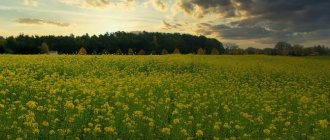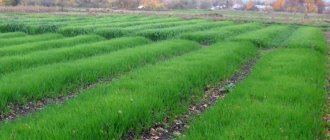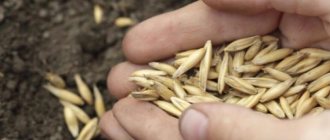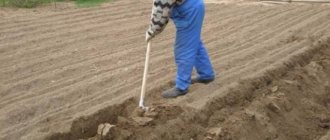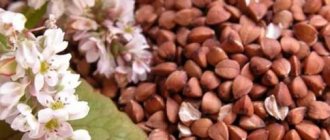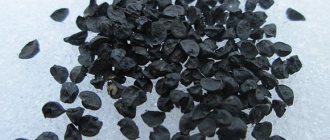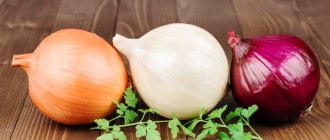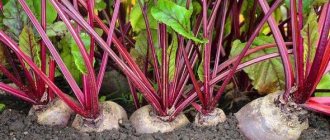Advantages and disadvantages of white mustard as green manure
White mustard from the cruciferous family is good not only as a spice. As a green manure, it is an excellent gardener's assistant. This tall (up to 70 cm) herbaceous plant with abundant foliage is capable of extracting and accumulating phosphates and other sparingly soluble micro- and macroelements from the soil . During the growth period, a large amount of nitrogen compounds is formed in all its parts. The green mass of mustard, mowed and embedded in the soil, rots and releases it all in chelated form (easily accessible to other plants).
The use of mustard as green manure is popular in agriculture in many countries.
In addition to enriching the soil with useful substances, white mustard has other beneficial properties:
- its presence prevents pathogenic microorganisms and fungi from developing in the soil, it saves cultivated plants from scab, rot and late blight;
- cleans the soil of pests - wireworms, slugs, codling moths;
- enriching the soil with nitrogen, slows down its alkalization;
- thanks to the branched and long root system, it makes the soil more loose;
- prevents weeds from growing;
- mowed in the fall, serves as a natural mulch and insulation;
- prevents the leaching of nutrients from the soil during heavy rains;
- shortens the crop rotation cycle, allowing the crop to be returned to its original place 1–2 years ahead of schedule.
The many advantages of white mustard do not exclude some problems when growing it as green manure. Mustard is also sick. She may be affected by:
- Alternaria blight,
- powdery mildew,
- white rust
- keel.
When embedded in the ground, along with the green mass, pathogens also go deep into the ground, infecting the cultivated plants then planted in this place.
Mustard is not planted in places where cabbage, radish, lettuce or radishes previously grew. These are its relatives from the cruciferous family. They are prone to the same diseases. If pathogens remain in the soil, mustard will also suffer.
And one more relative disadvantage of white mustard as a green manure is that it is not a universal fertilizer. It is mainly used to saturate the soil with nitrogen and phosphates . All other substances necessary for plants are applied in the form of fertilizers or by combining mustard with other green manures.
Green manure mustard: do I need to dig it up or can I just mow it?
The ideal option would be to plant mustard before potatoes or legumes, as well as tomatoes. These crops go well together; you can also restore the soil with mustard before planting strawberries. This quickly improves the quality of the soil, making it richer and more saturated with organic and inorganic fertilizers. In the fall, green manure mustard must be dug up, but this process can be postponed until spring. In autumn it is mowed.
Benefits of green manure mustard for the site:
- Delays the leaching of mineral impurities from the soil during heavy rainfalls.
- If the plant is planted in the fall, the tops and mulch retain the snow, thereby preventing the leaching of moisture.
- Prevents the growth of mold, and improves the condition of the soil, making the soil looser. This is an ideal option for sowing on heavy soils.
- Prevents the development of late blight, sharply reduces the number of slugs and weevils on the site.
- It is a very good honey plant, so it is an excellent option for gardeners who breed bees.
- It is a good neighbor for legumes and grapes. Since mustard root secretions saturate the soil with nitrogen.
The plant is very affordable; it can be purchased at any garden store for little money. At the same time, sowing does not require specific skills. If mustard is planted for the purpose of neighborhood, then in this case it is necessary to sow not in pinches, in a chaotic order, but in rows.
Mustard flowers
As you can see, the use of green manure mustard significantly reduces soil recovery and allows crops to be planted in the same place with an interval of one, maximum two years.
When and how to plant mustard in the garden and what to do with it next
Even in cold regions, white mustard can produce two harvests . It can be planted in autumn, summer or early spring - it can withstand frosts down to -6°C.
Mustard can grow in any soil, although it prefers sandy or loamy, well-drained, loose soil. And yet it is capable of growing even on heavy clay soils and with a wide pH range - from 4.2 to 8.2.
Spring sowing
In spring, mustard can be sown as early as March, in warm regions - even in the third ten days of February. It needs 30–40 days to grow foliage .
Procedure:
- The beds must first be cleared of last year's plant debris.
- If necessary, go over them with a rake or flat cutter. Spring soil is moist and it is convenient to sow seeds.
- The best way is to simply scatter them over loose soil and not cover them. With the first precipitation they will go into the soil themselves.
Seed consumption:
- when sowing in beds - 400–500 g per 1 hundred square meters;
- in row spacing up to 15 cm - 120–150 g.
If the air temperature is above 10°C, then you will see the first shoots already on the 3rd–4th day. A continuous green cover is formed in about a month.
White mustard is the best predecessor for potatoes and tomatoes
Mustard does not require special care. If the weather is dry, it needs to be watered once a week. The plant does not need fertilizing.
If you do not plan to collect seeds from mustard, then it is better to mow it and seal it before flowering and the formation of pods, otherwise it will self-sow throughout the area and turn from green manure into a weed . There are two more reasons why you shouldn’t wait for budding:
- during this period, the plant spends a lot of nutrients on the formation of flowers, and then ovaries, and becomes less nutritious for the soil;
- Mustard stems become coarser and are less processed by soil microflora.
The optimal time for mowing mustard is 45 days from the date of planting. You can mow the grass and embed it in the ground when digging. The second option is to walk through the plantation with a hoe; it will mow and bury the green mass in one go.
It is best to plant the main crop in this place no earlier than 7–10 days later, since rotting mustard residues suppress the growth of other plants.
If the weather is dry, the ground with green manure needs to be watered, this will help the soil inhabitants to cope with processing faster. To make the process more intense, the bed with planted mustard can be watered with EM preparations, for example, Baikal.
Summer planting
If you need to remove, restore and improve a certain piece of land from crop rotation, sow it with white mustard in the summer. This can be done twice per season:
- The first sowing is done at the end of May. After a month and a half, the grown greenery can be embedded in the soil.
- After another two weeks, you can sow mustard in this place again.
This method of restoration is suitable if there is no severe depletion of the soil.
To restore completely depleted soils, improve the structure and speed up their return to crop rotation, summer sowing of mustard does not make much sense. Green manure alone is not able to quickly and effectively restore fertility. The process of forming a humus layer takes more than one year, so it is better to use more effective methods for this - adding compost, humus and other fairly strong organic matter.
How to sow mustard in the fall and whether to bury it in winter
It is better to sow mustard in winter immediately after harvesting, especially in cool regions, so that it has time to grow before severe frosts arrive. In the southern regions, green manure is planted until mid-November.
Procedure:
- After harvesting, the beds are cleared of plant debris and weeds.
- The soil is fertilized with humus (no more than 2 buckets per 1 sq. m) and dug up or loosened with a rake.
- The seeds are scattered thickly over the entire area of the bed, so that a continuous vegetation cover is then formed.
- If there is no rain and the soil is dry, a thin (no more than 1 cm) layer of earth is poured over the seeds and watered so that the seeds are not blown away by the wind..
Then there are two possible scenarios for the development of events.
- If you managed to plant mustard in time, it has sprouted and grown thoroughly, it can be mowed and left on the surface of the earth as mulch.
- If the grass has not grown enough and the cold weather has already set in, the mustard is simply left in the garden.
In the spring, it is enough to dig up the ground or walk over it with a cultivator . Rotten mustard will serve as a good fertilizer.
Popular green manures
Among winter green manures, five are the most popular among gardeners.
No wonder they called it Mother Rye. It loosens the soil, parasitic plants do not grow in it, and after it there are practically no nematodes left in the soil. Rye disinfects the soil and removes rot from it. After rye, the soil becomes more nutritious. It also prevents the ground from freezing in winter.
It is planted in front of melon and nightshade crops and root crops.
Has the ability to improve clay soils. It makes them lighter and disinfects them from root rot. Works especially well in combination with vetch.
It is best planted as a predecessor to cucumbers and zucchini.
Barley
Winter and spring barley is planted as green manure in the fall. Like other cereal green manures, it copes well with putrefactive processes in the soil. The ears have a highly branched root system that blocks the development of weed seeds. It disinfects and improves soil and grows well in depleted soil. But it cannot be used on the same area for several years in a row.
This is an excellent predecessor to cucumbers, tomatoes, eggplants and potatoes.
This is a leguminous plant, very beautiful when in flower. Its fruits are so small that it is simply impractical to use it as a fruit crop. Its stems are strongly intertwined, creating deep shade underneath and preventing weeds from developing. It fertilizes the soil well, enriches it with nitrogen, drains it, fills it with air, and improves the health of the entire ecosystem. The soil under vetch plantings is reliably protected from erosion and washout.
We suggest you read How to make apple cider vinegar at home yourself
It is good to use in front of any plants except legumes. It works especially well when paired with oats.
It has a detrimental effect on earthen pests, has an excellent weed control, and prevents weed seeds from developing. Destroys pathogens in the area.
It should be sown as a winter green manure back in August; nightshade species grow especially well after it.
Mustard
An inexpensive and effective way to structure the soil. It enriches the soil with humus, grows well even on heavy soils, and turns them into light and porous ones. Protects the garden from weeds and harmful insects. Mustard can bring hard-to-reach substances from the soil into an easily digestible state. Suitable as a predecessor for nightshades and melons.
Why plant: when sowing brings more benefits
Spring, summer and autumn planting give one result - fertilization and soil sanitation. It is impossible to say which option is more effective, because their goals are different.
- Spring planting additionally allows you to minimize the spread or completely get rid of weeds for a long time.
- Mustard planted in the fall and left in the beds during the winter protects the soil from freezing and dehydration, and prevents erosive processes after harvesting (washing out and blowing out the fertile layer).
- Summer - restores the chemical composition of the soil that has been under planting for a long time.
Is it necessary to mow mustard before winter?
In recent years, we have been leaving mustard in the greenhouse to go into the winter on its own. And it doesn’t matter how much greenery it manages to produce before frost. In any case, the root system at least slightly structures the soil, reduces the number of pests and pathogenic microflora in it, and the foliage acts as a surface mulch, which additionally protects the upper layers of the soil from deep freezing in winter.
Gradually increasing cold will inhibit the growth of the plant, so it will not have time to reach the flowering phase, and will go into winter in a darkened green state.
Unpretentious mustard will continue to maintain its weak vital activity even after the first slight frost.
Green manure in a greenhouse
The soil in a greenhouse is different from open soil. It does not receive useful substances, it quickly becomes thinner and undergoes erosion. Greenhouse fertilizers for the greenhouse become a real salvation.
Green manure is what will help disinfect the soil, destroy pests, and saturate the soil with necessary microelements.
But there is a danger of oversaturation with certain substances and a lack of others - if you use the same green manure for several years in a row. They need to be changed in different areas. Crop rotation is necessary and important.
The rules for spring and autumn planting green manure in a greenhouse are also different.
How to plant
The sowing rules are almost the same as when working in open ground.
- In the selected area, you need to properly remove all the remains of previous plants, tops, visible roots, and so on.
- Level the soil and sprinkle it thickly with seeds.
- Lightly rake them in.
- Sprinkle a small layer of compost on top.
- Moisten the soil well.
In greenhouse conditions, seeds usually begin to germinate within 5-10 days, depending on the crop planted.
Bottom line
Once, having planted green manure - white mustard - on your plot, and personally appreciating all the positive aspects of this wonderful plant, you will no longer be able to resist and be sure to include mustard in your annual sowing calendar.
In the fall, after harvesting, it is very important to properly prepare the site for the next season. To do this, it is necessary to replenish the useful biological resources of the soil used over the summer. This can be done by planting green manure, the most useful and popular of which is probably mustard. The advantages of planting mustard in the fall before winter are that the soil is not clogged with chemical elements, and all restoration processes occur naturally through biological means.
What green manures are best to sow in the fall?
The most common option for planting green manure in the fall is rye or mustard. Sow as soon as the land is free. These plants sprout very quickly. The mustard is left on the surface, and it goes green under the snow. And it is best to cut the rye, but not remove it, but leave it as mulch. Let's look at the most popular plants in each group of green manure.
Legumes
This group includes clover, alfalfa, lentils, soybeans, peas, chickpeas, and lupine. The most popular is, of course, lupine. Thanks to it, the soil is enriched with nitrogen.
Nitrogen is especially deficient in sandy and other soils with low organic matter. Approximately half of the accumulated nitrogen in the soil is used to form this year’s crop, and the soil will leave the remaining nitrogen in reserve. Such nitrogen will work much longer and more efficiently than ready-made mineral fertilizers.
After lupine, you can plant any plants. To improve the soil, lupine can be sown both before winter and in spring.
Cruciferous
These are mustard, rapeseed, rapeseed, and oilseed radish. The most commonly sown cruciferous crop is mustard. It is capable of transforming difficult-to-digest microelements into easily accessible ones. Mustard seeds are also inexpensive compared to other green manure seeds. In addition, mustard has phytosanitary properties on the soil.
Buckwheat
Buckwheat grows quickly and has a powerful root system, which sometimes develops up to one and a half meters. This promotes deep loosening of the soil, and rotted buckwheat enriches the soil with potassium, phosphorus and useful organic components.
Hydrophiles
A prominent representative is phacelia. The undeniable advantage of phacelia is its rapid growth and ability to rapidly gain green mass. Any soil is suitable for this plant; the plant is cold-resistant and does not depend on bright lighting.
Cereals
We choose between wheat, oats, rye and barley. Rye is the most popular for planting before winter.
Cereal plants have a widely branched root system that breaks the soil into small lumps. This property of cereals is especially useful on heavy compacted soils into which water does not penetrate well.
At a depth of 10 centimeters, cereals literally form felt in the soil from many roots and due to this, the soil is enriched with root remains. Fungi settle in the roots of cereals and suppress pathogenic microflora.

